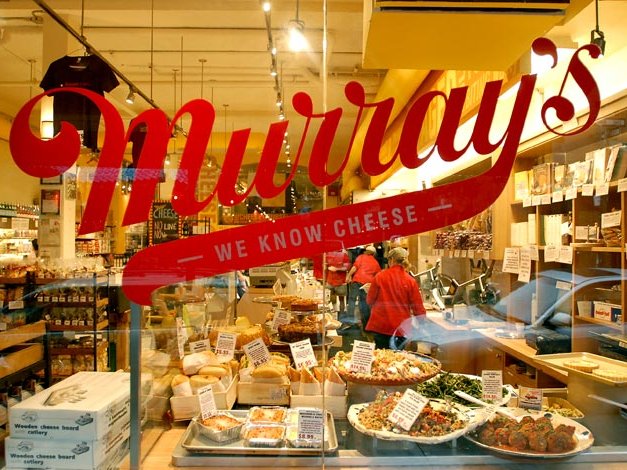The cheese world is in a flurry over recent reports that shredded cheese – particularly hard cheeses like parmesan – are supplemented, some heavily, with a plant fiber that is often derived from wood (most commonly referred to in the food industry as "cellulose").
The cellulose, which has no nutritional value, is plant fiber which has been powdered and is entirely legal in the U.S. Although it seems bizarre that a filler potentially made from wood is allowed in food, the substance also has not been proven harmful by any conclusive scientific studies. However, it’s worthy to note that, because humans have no way to digest it, cellulose can cause a variety of digestive issues, most notably gas and often a laxative-like effect. And yes, the FDA even admits it.
The obvious solution, if you want to avoid ingesting the additive: buy blocks of cheese and grate it yourself.
But, in a world of convenience, that’s not what most people do.
Although the practice of using cellulose in food products has been going on for years, a recent Bloomberg News report shed new light on the issue, revealing that the problem is both widespread and (in some cases) used as a way for companies to produce packaged shredded cheese products at lower cost.
"Cellulose is a safe additive, and an acceptable level is 2 percent to 4 percent, according to Dean Sommer, a cheese technologist at the Center for Dairy Research in Madison, Wisconsin," says the Bloomberg article.
No regulations for cellulose
Despite the guideline, there is currently no limit on the usage rate established by the FDA. In fact, cellulose is an FDA approved anti-clumping agent for grated cheeses. And, after speaking with a number of industry professionals, it seems that the crux of the issue is not necessarily that cheeses contain wood pulp, but that some brands may not be labeling their products in a transparent manner.
In fact, we talked with two reputable Wisconsin cheese brands who produce shredded cheese products, and both attested to using cellulose to prevent clumping in their products. However, both use the additive at a level of 2% or less.
But, according to Bloomberg, independent testing for wood pulp in numerous store-bought grated cheeses revealed that a number of brands are using far more – with a Jewel-Osco brand coming in at 8.8 percent cellulose and a Wal-Mart brand registering at 7.8 percent. Even Whole Foods 365 brand, which doesn’t list cellulose as an ingredient on the label, still tested at 0.3 percent.
Bloomberg also notes that a drawn-out FDA investigation into Castle Cheese Inc. – a company which falsely claimed to produce 100% parmesan cheese, but used a high percentage of cellulose and a mixture of other cheeses – resulted in the company discontinuing the products and filing for bankruptcy in 2014.
When asked to comment on the issue, Patrick Geoghegan, senior vice president of corporate communications for the Wisconsin Milk Marketing Board noted: "It is disappointing to learn of this situation because we have long worked to assure that consumers could buy wholesome, safe and honest products – that’s at the core of everything we stand for in the dairy industry. We are confident that this is an isolated instance and that the FDA will do its job and correct this situation."
Not just cheese
But, let’s step away from the cheese discussion for a moment, because cheese isn’t the only food that’s implicated.
Cellulose has been used for years as a food additive, with little fuss (see, for example, this Mayo Clinic post from 2011, which notes that cellulose is used to make ice cream "creamier").
Cellulose is often used as a filler. It's tasteless and cheap. Best of all (for manufacturers looking to save cash), with minimal effort can take just about any shape. So to save a few bucks, it’s easier to use cellulose in a pre-packaged item than it would be to use flour, sugar, or other premium ingredients.
In fact, the list of foods where cellulose is used is long, and it includes many "low carb" foods, puffed snack foods, baked goods, instant foods, diet foods, milk drinks, whipping cream, mayonnaise, dressings, frozen desserts and reformed meats (think: fast food burgers).
So, what’s the solution?
Unless the FDA decides to ban the use of cellulose in food products altogether, which is unlikely, reading labels on processed foods – and avoiding ones that list cellulose – is really the only way to go.
If you don’t trust the labels – understandable reaction considering the Castle Cheese case – opting for whole, unprocessed foods whenever possible is a solution. As far as cheese goes, consider forgoing the grocery store brands and buying cheese from reputable producers who maintain a high level of quality in their products; Wisconsin has a number of great Parmesan producers, including Sartori and BelGioioso, whose products stand up to their Italian counterparts.
Both of these steps should guarantee that you’re not eating a sapling’s worth of wood with your favorite dinner.
As a passionate champion of the local dining scene, Lori has reimagined the restaurant critic's role into that of a trusted dining concierge, guiding food lovers to delightful culinary discoveries and memorable experiences.
Lori is an avid cook whose accrual of condiments and spices is rivaled only by her cookbook collection. Her passion for the culinary industry was birthed while balancing A&W root beer mugs as a teenage carhop, fed by insatiable curiosity and fueled by the people whose stories entwine with every dish. Lori is the author of two books: the "Wisconsin Field to Fork" cookbook and "Milwaukee Food". Her work has garnered journalism awards from entities including the Milwaukee Press Club. In 2024, Lori was honored with a "Top 20 Women in Hospitality to Watch" award by the Wisconsin Restaurant Association.
When she’s not eating, photographing food, writing or planning for TV and radio spots, you’ll find Lori seeking out adventures with her husband Paul, traveling, cooking, reading, learning, snuggling with her cats and looking for ways to make a difference.







